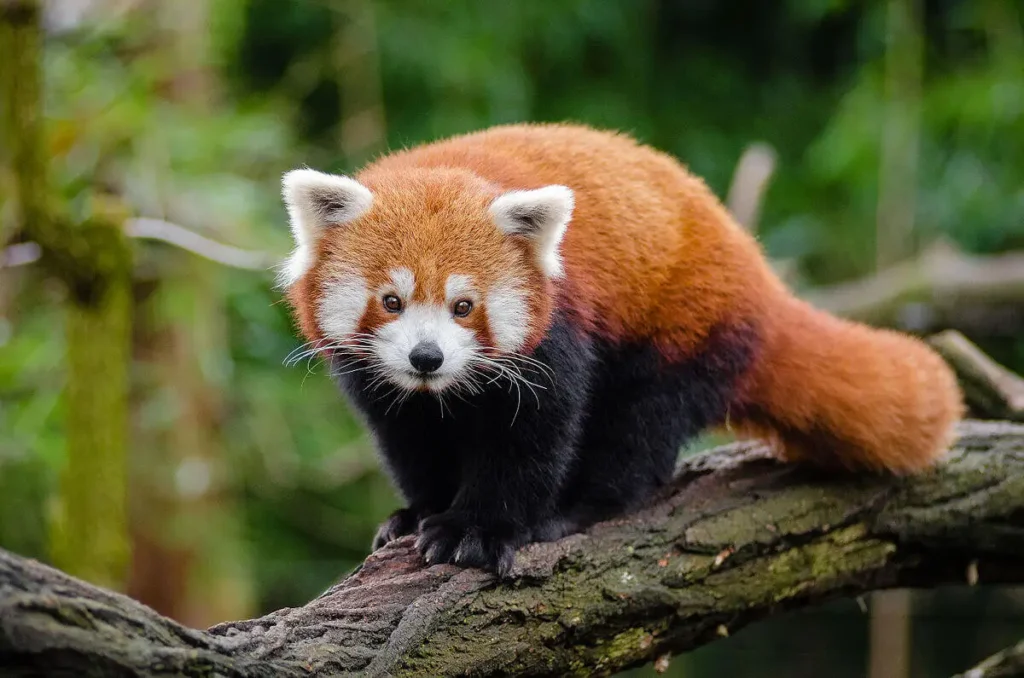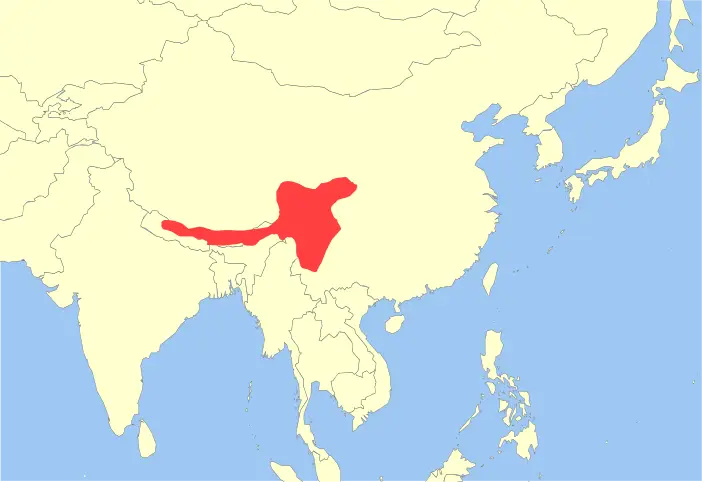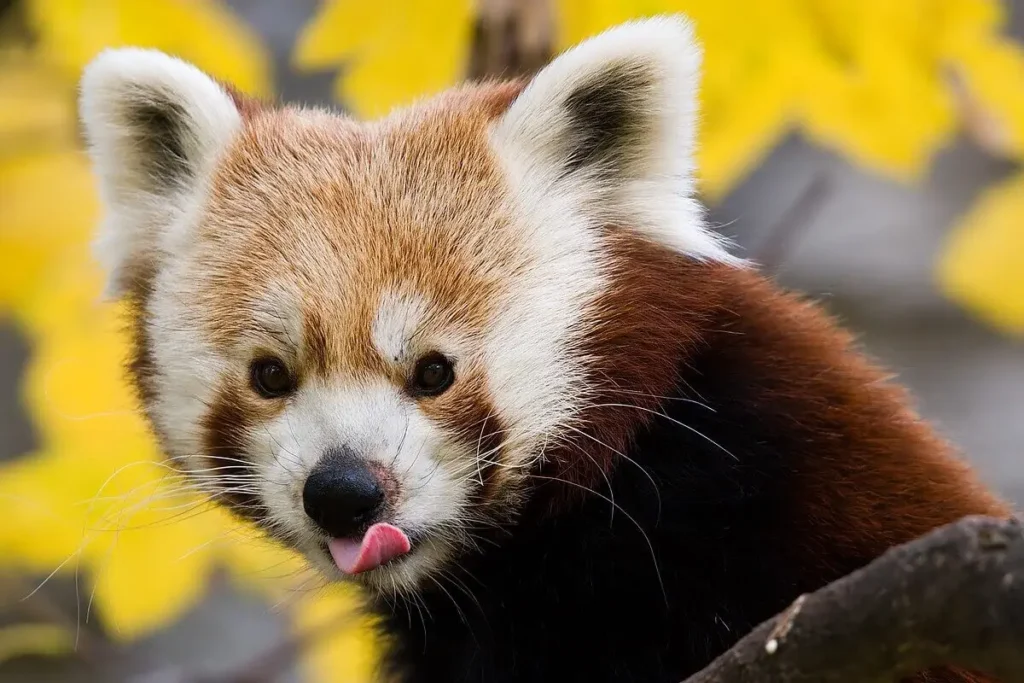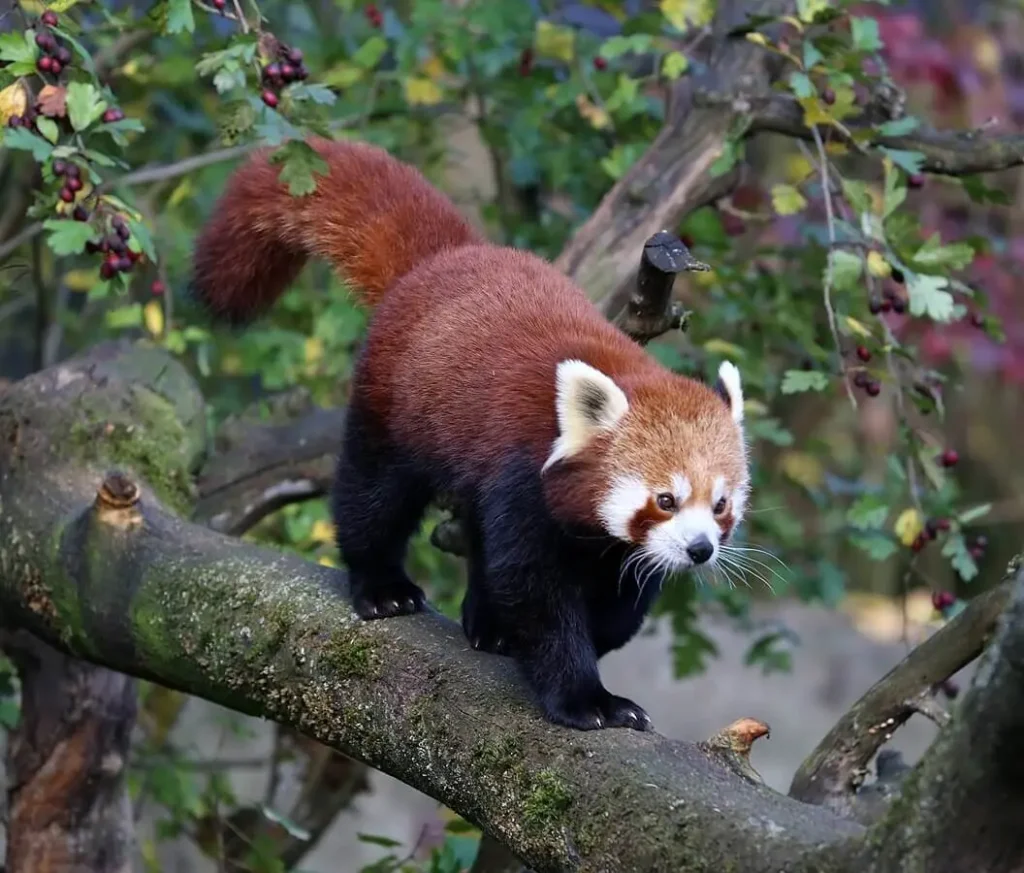Himalayan panda, or little panda (Ailurus fulgens), is a fascinating and rare representative of the fauna that attracts attention with its unique appearance and behavior. Despite its name, this animal is not a close relative of the great panda! In fact, it belongs to a separate family and a single genus Ailuruswho has no close contemporary relatives.
This small predator, which resembles a mix of raccoon, cat, and bear, is a symbol of the fight for wildlife conservation. In this article, we will tell you about its appearance, lifestyle, habitat, interesting facts and current threats to this fascinating animal.

📌 Scientific classification
The Kingdom: Animals (Animalia)
Type: Chordal (Chordata)
Class: Mammals (Mammalia)
Row: Predatory animals (Carnivora)
Family: Panda (Ailuridae)
Gender: Ailurus
View: The Lesser Panda (Ailurus fulgens)
Despite the fact that the lesser panda formally belongs to the carnivore family, its diet on the 90% consists of bamboo - like its larger namesake, the great panda (Ailuropoda melanoleuca).
🎨 Description and appearance
🔹 Sizes:
- Body length: 50-64 cm
- The length of the tail: 28-59 cm
- Weight: 3-6.2 kg (males are slightly larger than females)
- Height at the withers: 23-25 cm
🔹 Characteristic features:
✔ Thick reddish-red furwhich helps to camouflage among the foliage.
✔ Mask on the faceThe raccoon-like pelt gives it a cute look.
✔ Long fluffy tail with alternating light and dark rings.
✔ Sharp, curved clawsthat help to climb trees perfectly.
✔ "The Sixth Finger" - developed bone structure on the front legs, which helps to hold the bamboo.
✔ Soft paw padscovered with fur to protect them from the cold.

🌏 Where does the little panda live?
A lesser panda is inhabitant of the highland forests of Asiawhere it lives among dense vegetation, mostly bamboo thickets.
📍 Himalayas (Nepal, Bhutan, India)
📍 China (Yunnan, Sichuan, Tibet)
📍 Myanmar
📍 Laos
🔹 Typical habitats:
✅ Mountain forests at an altitude of 2,200-4,800 meters above sea level.
✅ Bamboo thicketsthat form the basis of her diet.
✅ Shaded areas with high humidity, which helps maintain a comfortable microclimate.
Pandas avoid open areas and prefer dense forests where they can hide from predators.

🍃 What does the little panda eat?
Although it is a carnivore, its diet more than 90% consists of plant-based foods.
🔹 The main foods in the diet:
• Bamboo (the basis of the diet, but can only eat young shoots and leaves) 🎋
• Fruits and berries 🍎
• Flowers and roots 🌺
• Mushrooms 🍄
• Birds' eggs 🥚
• Small rodents and insects 🐜
🔹 Features of digestion:
The little panda has short digestive tractso it absorbs only 25% of all the food it consumes. This causes it to Eat well all the time - she can spend up to 13 hours a day!
🐾 Lifestyle and behavior
🔸 Solo lifestyle - Pandas avoid the company of other individuals, except during the breeding season.
🔸 Night and twilight lifestyle - is most active in the morning and evening.
🔸 Gorgeous tree climber - spends a lot of time in the trees.
🔸 Communication through smells - marks the territory with special glands.
🔸 Slow metabolism - moves quietly, saving energy.

🍼 Reproduction and care of babies
🔹 Mating season: January - March
🔹 Pregnancy: 134 days
🔹 The number of babies: 1-4 (usually 2)
🔹 A mother raises her children on her own
🔹 Babies are blind at birth and weigh only 100-130 grams
🔹 They become independent at 7-10 months
👨👩👧👦 Little Panda and Man
🔹 Is it dangerous to humans?
Absolutely not! She's very shyHe avoids people and rarely shows aggression.
🔹 The main threats to the lesser panda:
🚨 Forest cutting - reduction of habitat.
🚨 Poaching - In some regions, they are caught for their beautiful fur.
🚨 Fragmentation of the environment - Roads and settlements separate populations, reducing the possibility of reproduction.
🔹 View status:
✅ IUCN Red List – vulnerable species
✅ International conservation programs - breeding in nature reserves and zoos
🤯 Interesting facts about the little panda
🔸 It has no close relatives among modern animals! 🧐
🔸 Its name means "bamboo bear" in Nepali.. 🎍
🔸 Cleans its own coat like a cat. 🧼🐈
🔸 It can stand on its hind legs to make it look bigger! 🙃
🔸 It is a symbol of Mozilla Firefox - it was chosen for the browser logo 🦊
🔥 Conclusion
A lesser panda is a real treasure of natureIts uniqueness and vulnerability make it an important symbol of biodiversity conservation.
💬 Do you like the little panda? What fact surprised you the most? 😃🐼